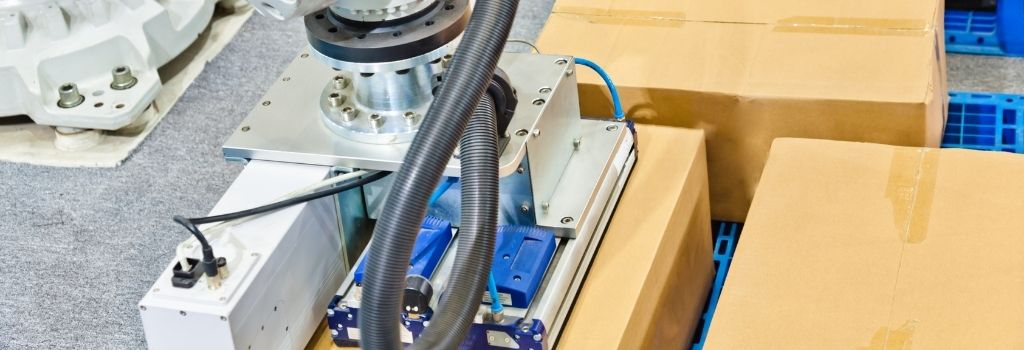- 세부
- 카테고리: Transportation
As public safety technologies continue to improve and evolve, mobile command and control center (MCCC) solutions are becoming more prevalent for public safety agencies of all sizes, and recognized by law-enforcement and military applications and even among organizations that require high quality, mobile video surveillance. Mobile command centers can be vital equipment during emergencies, man-made or natural disasters, enabling quick response and uninterrupted communications to monitor and respond to a crisis.
더 읽기: Multi-WAN Gateway Optimizes Mobile Command Vehicle Connectivity
- 세부
- 카테고리: Industrial Automation
The growing demand for AI machine vision can be found in fast supply-chain processes, and one such application is the unloading of boxes from pallets, or depalletization.
A system integrator specializing in delivering smart solutions for supply chain management came to Lanner in search of a hardware solution that could be relied upon for automating most of the arduous tasks involved in depalleting, so that an end customer in the logistics industry can increase their productivity, throughput and also save costs.
더 읽기: LEC-2290E: Enabling AI 3D Machine Vision For Intelligent Depalletization
- 세부
- 카테고리: SD-WAN
In today’s digital world, designing and implementing a public safety system requires considering an entire ecosystem, from applications, services, and property and network infrastructure. Deploying a high-quality software-defined wide area network (SD-WAN) is essential to operate a public safety ecosystem, which can enhance the speed, efficacy, coverage, and reliability of first responders by enabling citizens and public safety answering points to send and receive voice, text, photos and video communications over a wireless network.
더 읽기: FirstNet Ready uCPE Optimizes Real Estate Multi-site SD-WAN
- 세부
- 카테고리: Network Computing
Educators around the world have been rushing to implement contingency plans for remote learning in order to maintain educational continuity since late 2019. While it does appear that school closures could be extended for many through the end of the 2021 and even into the 2022 school years, providing safe, filtered devices and a safe, secure remote learning environment for students are more important than ever.
더 읽기: SASE Appliance And Deployment-ready CPE For Cloud-based Web Monitoring And Filtering
- 세부
- 카테고리: Telecommunication
The importance of speedy and reliable connectivity has never been more apparent than during the global pandemic. Nonetheless, modern network technologies also hold the key to global recovery. As countries slowly emerge from the pandemic, industries will seek to accelerate their efforts to automate, digitize, and enhance their capabilities, making it a critical time for communication service providers (CSPs) to deliver on the immense potential and power of 5G.
더 읽기: Delivering 5G Low-Latency Applications at the Edge with Scalable MEC Platforms
- 세부
- 카테고리: Intelligent Systems
The growing consequences of accelerating climate change have been visible across the world with wildfires, floods, severe heatwaves, and even tropical cyclones in recent years. Climate change presents many challenges to society, as extreme weather events and pollution increases disease infection, while frequent wildfires and droughts threatens livelihoods. Data from an automated weather station (AWS) can be used to detect climate change trends and input into models to predict future changes in our environment.
더 읽기: Rugged Edge Computing Gateway Enhances Automatic Weather Station Networks
- 세부
- 카테고리: SD-WAN
Software-defined WAN solutions can bring unparalleled agility and cost savings to networking, which has been the primary fuel for the rapid growth of SD-WAN in recent years. Organizations, from enterprises, small-medium businesses to cloud and managed services providers, can deliver more responsive, more predictable applications at lower costs in less time than the traditionally used legacy equipment.
더 읽기: Enabling High-Availability, Secure, and Managed SD-WAN Solutions












